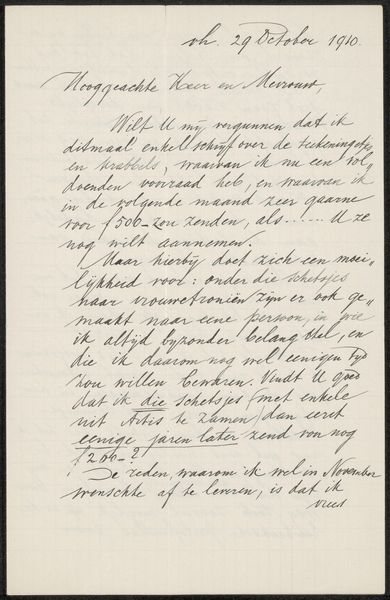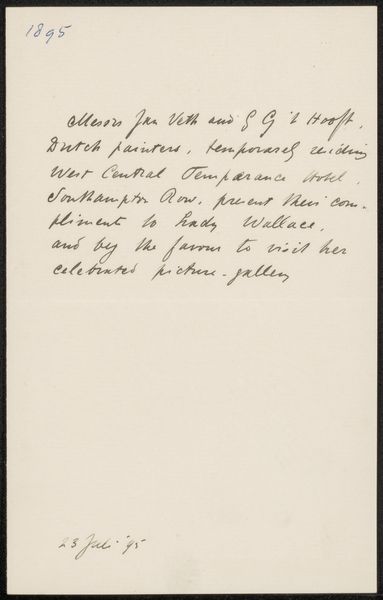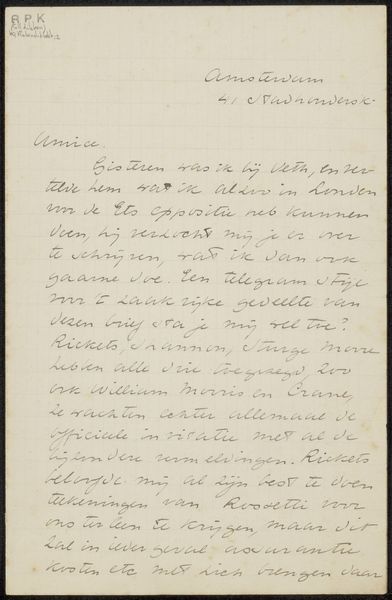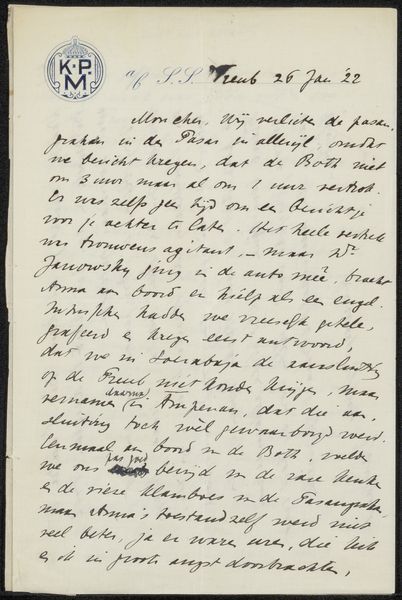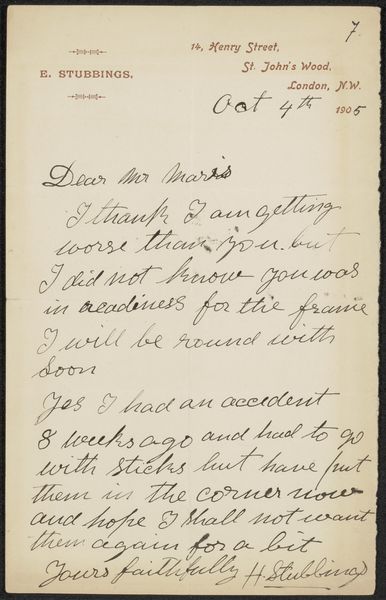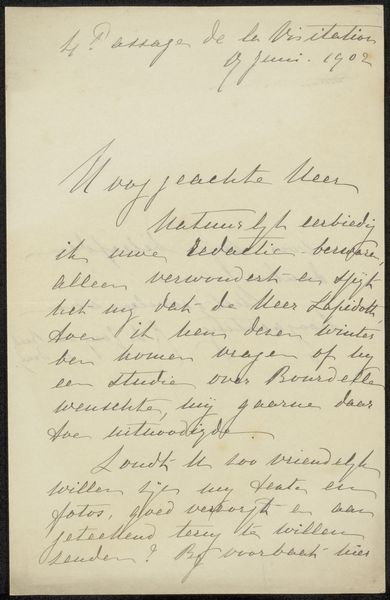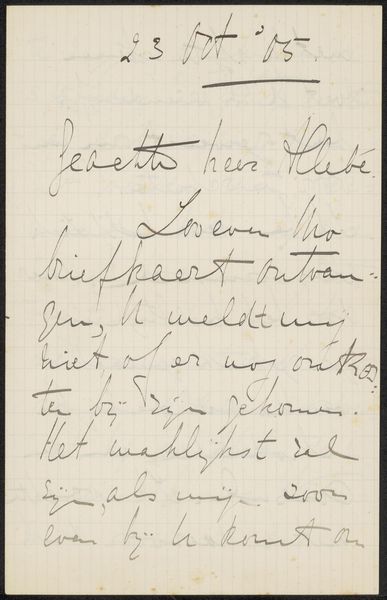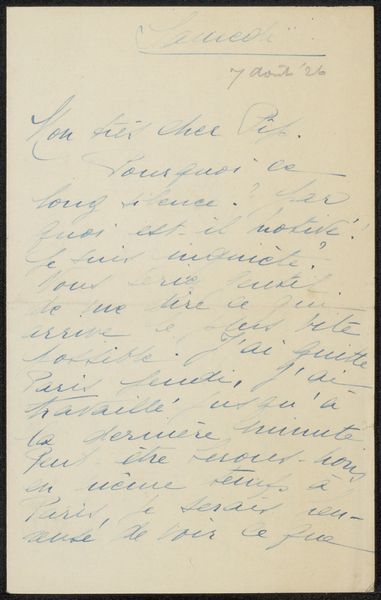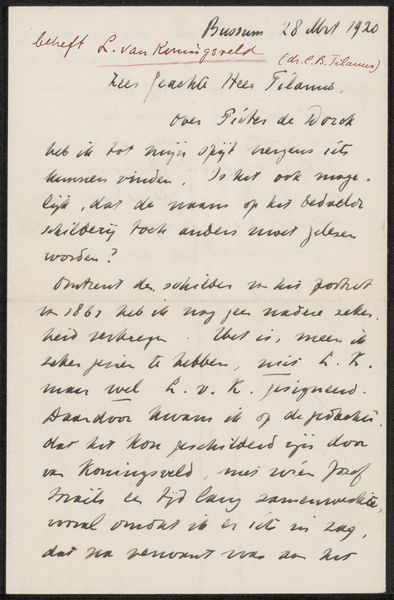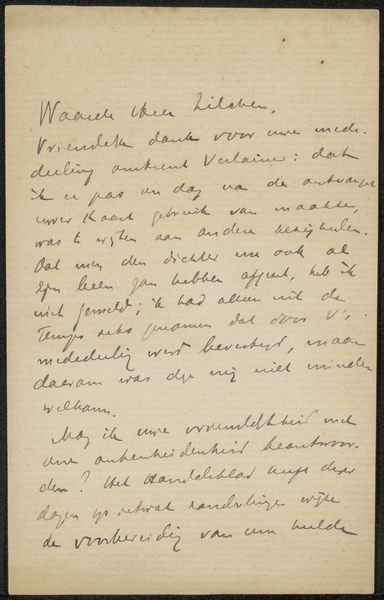
drawing, paper, ink
#
drawing
#
hand-lettering
#
hand drawn type
#
hand lettering
#
paper
#
personal sketchbook
#
ink
#
sketchbook drawing
#
sketchbook art
Copyright: Rijks Museum: Open Domain
Editor: This is "Brief aan Anna Dorothea Dirks" by Louise Catharina Gorter-Cnoop Koopmans, likely drawn between 1875 and 1916. It’s a drawing in ink on paper, resembling a handwritten letter. It feels intimate and personal, like a glimpse into a private conversation. What historical or social contexts do you consider when looking at a piece like this? Curator: This letter offers a window into the daily life and social dynamics of women in the late 19th or early 20th century Netherlands. The handwriting itself speaks to a certain level of education and privilege. Consider the act of letter writing: who had the time, resources, and literacy for such communication? This was not a universal experience. How might social class and gender roles have shaped the relationship between Louise and Anna? Editor: So, you’re saying that something as simple as a letter reveals inequalities of the time? Curator: Precisely! The reference to speaking French, for example, indicates a certain social circle and cultural aspiration. It reflects the broader European context where French was the language of diplomacy and the upper classes. Why do you think the writer is anxious about who will speak French? Editor: Maybe it implies something about their individual levels of education or social confidence? The line "Ik bt dat ik ga statteren" hints at a certain anxiety and social pressure to perform well. Curator: Exactly! It’s a small detail that unlocks a much wider understanding of the societal pressures women faced, even in seemingly casual interactions. Examining such details through a feminist lens can really deepen our understanding of history. How does this change your initial perception of the work? Editor: It makes me appreciate the hidden layers of meaning within something that appears so simple and commonplace. It's more than just a letter; it’s a social document. Curator: Absolutely, and thinking about art in this intersectional way really lets us understand art in a whole new depth.
Comments
No comments
Be the first to comment and join the conversation on the ultimate creative platform.

